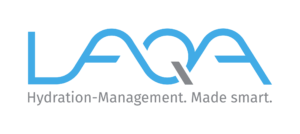The water contains dissolved particles that the eye and tongue generally do not notice when drinking. And yet they are there. With the help of technical measuring devices, so-called microsiemens can be determined. But what do these measured values say about the quality of drinking water and what does it mean when particles dissolved in the water bubble out of the tap in the kitchen?
Microsiemens – how are they determined?
The particles dissolved in the water are measured indirectly using a conductivity meter . The value of the so-called microsiemens (µS) is determined by the electrical resistance in the water. Microsiemens are therefore the unit of measurement for electrical conductance. The measured value can be used to calculate the quantity of particles. The amount of particles is given in the unit ppm(parts per million). The number corresponds to the particles present per million water molecules. The conversion is comparatively simple, because one ppm corresponds to approximately two measured microsiemens. A higher value indicates a higher proportion of particles dissolved in the water. As the temperature of the water has a not insignificant influence when measuring substances, a conductivity meter should always be suitable for temperature measurements at the same time.
No chemical analysis
Unlike a chemical analysis, which measures the exact ingredients in the water, conductivity measurement and its conversion only determine the absolute number of particles found in the water. In addition, not all substances contained in water conduct electricity. For example, pesticides used in conventional agriculture or industrially applied fungicides can be dissolved in naturally occurring water. However, as they have no conductivity for electricity, they are not taken into account in a microsiemens analysis. Hormones, which enter the water cycle primarily through the pharmaceutical industry, factory farming or private households, cannot be detected with a conductivity measurement either. Nevertheless, from a scientific point of view, the basic assumption is that tap water with a very low microsiemens value can be regarded as very clean water. If water is completely chemically pure “H2O“, it is not conductive. No pipe is possible without particles in the water.
Number of particles influences the mode of action
If not all particles in the water can be detected by conductivity measurement, what significance does it have for drinking water? In fact, the measurement can be used to demonstrate a very important property of water on the human metabolism. The measured value for drinking water should be below 130 µS . Only in this area can the water in the body fulfill its beneficial properties. Water is the most important fluid in the human body. It can only absorb, transport and remove substances if it does not already have too many dissolved particles. Above the limit value of 130 µS , the water is already saturated. It then loses its ability to penetrate the cells via an osmotic process. This means that water with too many dissolved particles loses the ability to clean cells. At lower values, the water is not yet saturated and can easily supply the cells with nutrients, bind unwanted substances in the body and effectively detoxify the cells. This is good for your health.
Limit values far above optimum
Drinking water below 130 µS has been scientifically proven to be particularly beneficial for the body. Pure spring water, unpolluted rain and uncontaminated fresh melted snow generally have excellent values.
However, the German official regulations are based on the Drinking Water Ordinance and this – in comparison to the
regulations of the World Health Organization
(WHO) and those of the European Union (EU), which already specify 400 µS as the limit value, these have comparatively very high limit values.
Microsiemens test: If you want to drink your drinking or mineral water with a clear conscience and do not want to invest in your own conductivity meter, you can have the water tested for dissolved particles at most consumer protection organizations, some laboratories or selected pharmacies.
